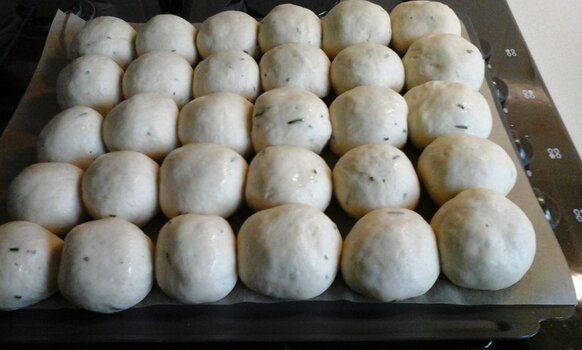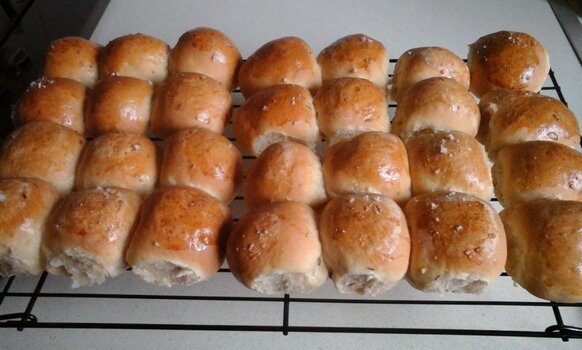Berties
Legendary Member
I think your issue might be lack of salt. I note you said that you followed the recipe to the letter, but 'no salt' - bread dough needs salt! It's part of the science of bread making. Realistically, the only three ingredients you need to make wholesome bread are flour, water, salt and yeast. Many recipes have other things like oil, sugar etc, but these are a matter of taste, and I never use them in my bread baking, yet my bread is good.
What I would do is this: put your flour in the bowl first, then add the salt to one side and your yeast to the other. Salt and yeast cannot make direct contact with one another or the yeast will die, so mix each one to the side of the bowl of flour and then work it all in together, by which time they'll each be mixed through the flour enough to be 'safe'.
Next add any other extra ingredients you are using such as sugar or oil. Then the liquid. Now, there's a lot of misunderstanding concerning temperature of the liquid. Back in the day when yeast was a lot less reliable than it is now, you had to use slightly warmish water in order to get it going; you don't need to do that now. In fact, many professional artisan bakers will tell you that 100% stone cold water is by far the better option, as cold water retards the growth of your yeast without killing it. What this means is that your dough will take longer to prove, but this retardation is when the flavour has time to develop fully. I not only use cold water in my bread, but I also put it in the fridge to prove to further slow down the process - the flavour is definitely improved! That said, do not ever use water that is anything above slightly warm, or hot - this will definitely inhibit or kill your yeast, and even if it does prove slightly, the end result will be a dense and heavy loaf. Add your liquid gradually; you're aiming for a soft and pliable dough that sticks to your hand but doesn't make a mess all over your hands either. Doing it by hand will get you used to how it should look and feel. Knead it until it's smooth and elastic before you prove.
One more point about yeast....Never use out of date yeast as it just won't work; if your yeast is fresh and/or well within the 'use by' date, then you don't need to prove it separately before adding to your flour. This was another method used back in the day when yeast was unreliable, and it had to be tested each time before use.
I hope this helps you a bit. Let me know how it goes.
Salt is the bakers friend and enemy ,a harvest plate where you shape dough and not wish it to rise you retard the yeast with salt
Salt in high concentrations can kill yeast yes. So can sugar, though salt is so much better at it. You see both are hygroscopic, meaning that they suck water out of stuff. This induces osmotic stress to the yeast cells leading eventually to cell breakdown (aka death).
On lower concentrations salt will throttle the yeast fermentation producing a richer and more uniform crumb.
Adding the salt early or later in the process will have a big effect on your dough, but that won't be because of the way it messes up with the yeast. Salt is supposed to coagulate gluten proteins, in a sense it "stiffens" the dough. On various situations this should happen late in the process



